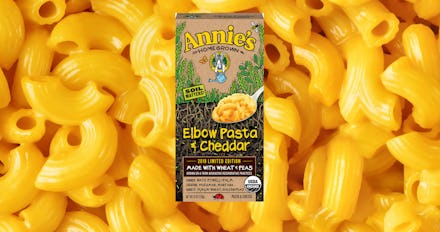The “organic” label is often meaningless. Here’s the next food phrase big brands are banking on.

“Regenerative agriculture” is a bit of a mouthful compared to “organic,” but there’s a good reason why consumers should familiarize themselves with the term: It will start appearing on food labels as a way for brands to demonstrate they work with farmers dedicated to healthy soil.
On Tuesday, Annie’s Homegrown, Inc., known for its white cheddar macaroni and cheese, announced it has partnered with Montana farmers who use regenerative agricultural practices. The farmers grow crops — including wheat, peas and oats — that are later developed into limited-edition noodles and graham cracker snacks for Annie’s. The farmers’ names and crops will appear on each limited-edition Annie’s box.
On Wednesday, DanoneWave, a multinational food company that includes brands like Oikos and Dannon, also announced its commitment to exploring regenerative agriculture and soil health within the next year and a half. Dannon, Annie’s and Ben and Jerry’s are working together to create a verification system for food grown using regenerative agriculture, Farm Forum reported Wednesday. If they succeed, products would likely display a seal like the “USDA Organic” one.
This move could help reverse climate change
Regenerative agriculture is synonymous with soil health, Byron Rath, communications specialist for the Soil Health Institute, said in an email, explaining that soil health is a holistic term. Healthy soil helps filter water, provide nutrition to crops and can also help purify and clean the air.
Healthy soil can play a large role in preventing or reversing climate change. The ability of soil to hold water can help “build resilience to drought and extreme precipitation,” Rath explained. The “soil organic carbon” in a given field of crops can influence how much water the soil can retain. “Farming practices such as no-till, cover crops and crop rotation have proven effective at increasing [soil organic carbon], thereby restoring a soil’s resilience,” Rath said. The process of allowing healthy soil to store carbon from the atmosphere is known as carbon sequestration.
So why aren’t farmers embracing regenerative agriculture already? According to Rath, farmers do want healthy soil but often have short-term leases on farmland. “Long-term investments are needed to improve soil health,” he noted.
These specific farming methods might not increase yield for farmers either. In a peer-reviewed study published on Peerj in February, researchers noted that regenerative agriculture corn fields had a 29% lower yield but much higher amount of organic matter in the soil compared to insecticide-treated fields. However, pests were 10 times more abundant in corn fields treated with insecticide compared with corn fields where farmers used regenerative agriculture practices.
According to Jonathan Lundgren, coauthor of the aforementioned study and director of Ecdysis Foundation, his study was one of the first to use the phrase “regenerative agriculture” in scientific literature.
“There’s been a lot of interest, but the scientific community has been slow to respond,” he said in a phone interview. “Theres a lot of infrastructure devoted to making conventional agriculture work, rather than challenging us to rethink how to make our food. What we are talking about is a paradigm shift. And that doesn’t happen overnight.”
According to Shauna Sadowski, senior sustainability manager at Annie’s, there will only be a limited run of the two new products — a limited-edition mac and cheese and a limited-edition bunny grahams because supply is limited. The products will be available in Sprouts Farmers Market this spring.
“These two products are proofs of concept for a new way of partnering directly with farmers and communities that are advancing regenerative practices,” Sadowski said in an email. She explained that other brands in the General Mills portfolio — like Epic Provisions, which makes jerky and meat snacks — are working to advance grassland restoration efforts and create best practices around regenerative methods on farms and ranches.
“Today’s consumer wants to support brands and products that not only meet their standards when it comes to price, convenience and quality but also are representative of their personal virtues and values,” Gunnar Lovelace, cofounder of Thrive Market, an online marketplace for organic food and beauty products, said in an email. Thrive Market sells several products created with regenerative agriculture, including Yellow Barn Pasta Sauce and Crofters Blueberry Jam.
Regenerative agriculture picks up where the now-mainstream organic movement left off, Lundgren noted. “Organic agriculture can be manipulated,” he said, explaining that farmers can stop using pesticides to comply with the National Organic Board’s standards, but the farmers might continue destroying the soil health on their farms.
In September 2017, the director of the National Organic Program stepped down right before an audit revealed that many imported organic goods were not truly abiding by organic standards, BuzzFeed News reported. And an investigation by NerdWallet in December 2017 found the USDA failed to follow up on instances of fraud conducted by organic certifiers, Mic previously reported.
But Lovelace continues to have faith in the organic seal. “Nearly all social, economic, health and environmental crises we face as a species can, to some degree, be traced back to how we produce and consume food,” he said. “The USDA Organic seal is the most reliable way to ensure you’re buying food that’s been ethically produced.”
March 8, 2018, 12:50 p.m.: This story has been updated.